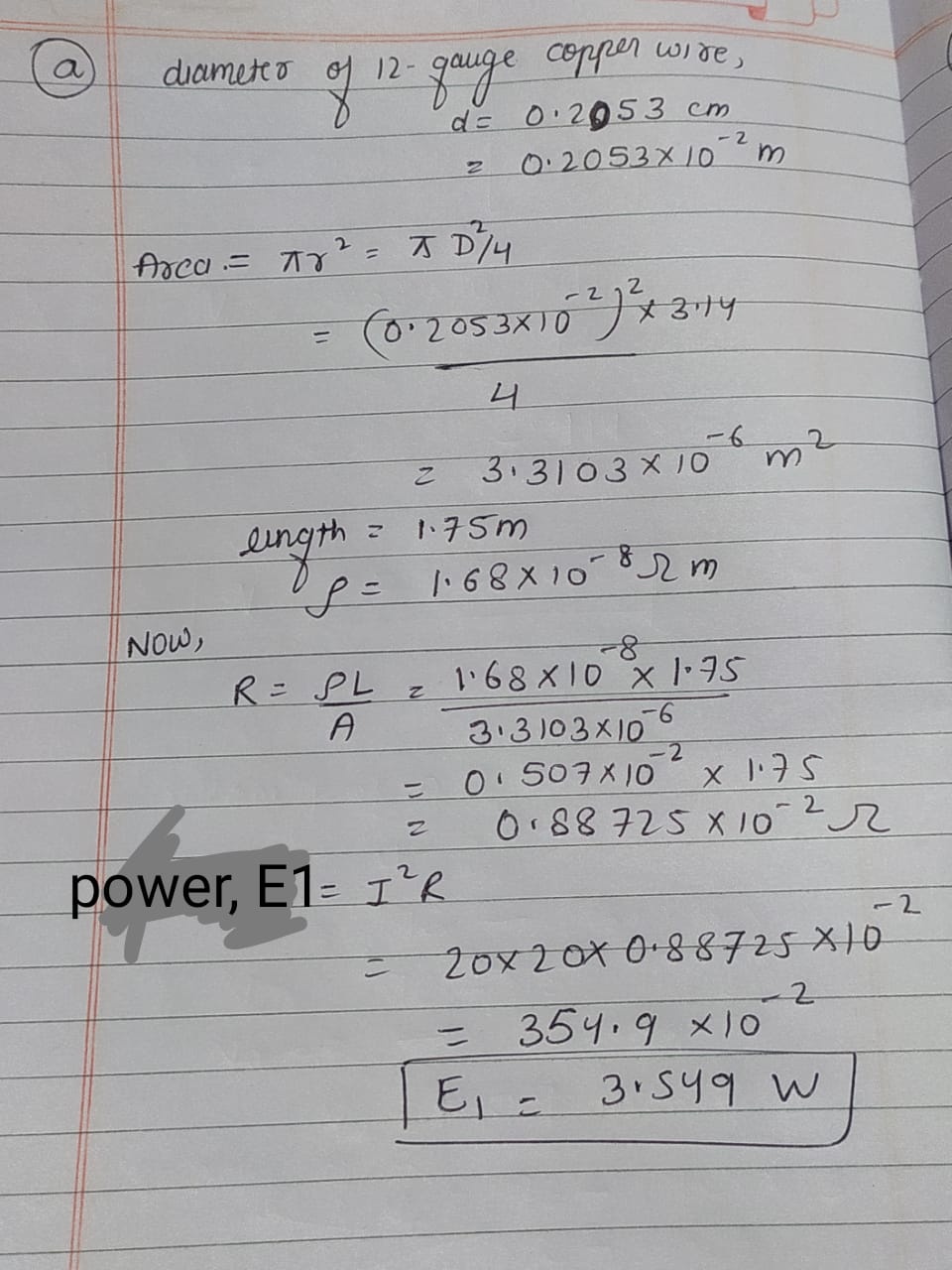Residential building codes typically require the use of 12-gauge copper wire (diameter 0.205 cm) for wiring receptacles. Such circuits carry currents as large as 20.0 A. If a wire of smaller diameter (with a higher gauge number) carried that much current, the wire could rise to a high temperature and cause a fire. (Table of resistivities) (a) Calculate the rate at which internal energy is produced in 1.75 m of 12-gauge copper wire carrying 20.0 A. W (b) Repeat the calculation for a 12-gauge aluminum wire. W (c) Explain whether a 12-gauge aluminum wire would be as safe as a copper wire.
Residential building codes typically require the use of 12-gauge copper wire (diameter 0.205 cm) for wiring receptacles. Such circuits carry currents as large as 20.0 A. If a wire of smaller diameter (with a higher gauge number) carried that much current, the wire could rise to a high temperature and cause a fire. (Table of resistivities) (a) Calculate the rate at which internal energy is produced in 1.75 m of 12-gauge copper wire carrying 20.0 A. W (b) Repeat the calculation for a 12-gauge aluminum wire. W (c) Explain whether a 12-gauge aluminum wire would be as safe as a copper wire.
Related questions
Question

Transcribed Image Text:Residential building codes typically require the use of 12-gauge copper wire (diameter 0.205 cm) for wiring receptacles.
Such circuits carry currents as large as 20.0 A. If a wire of smaller diameter (with a higher gauge number) carried that
much current, the wire could rise to a high temperature and cause a fire. (Table of resistivities)
(a) Calculate the rate at which internal energy is produced in 1.75 m of 12-gauge copper wire carrying 20.0 A.
W
(b) Repeat the calculation for a 12-gauge aluminum wire.
W
(c) Explain whether a 12-gauge aluminum wire would be as safe as a copper wire.
Expert Solution
Step 1 A
Here, the power means rate of consumption of energy.
Power = V * I

Trending now
This is a popular solution!
Step by step
Solved in 2 steps with 2 images
